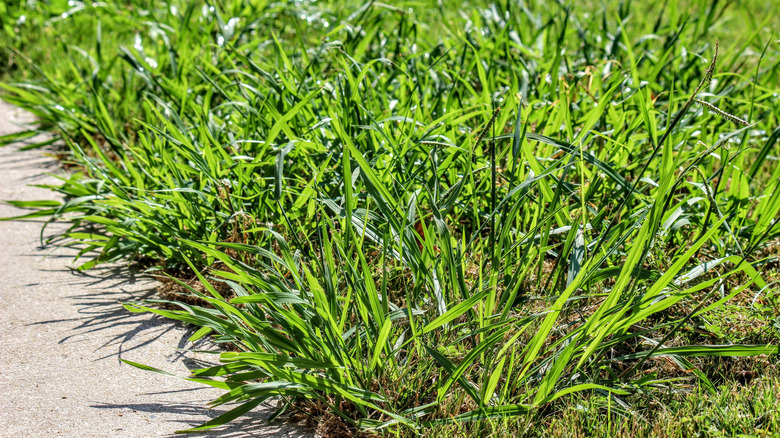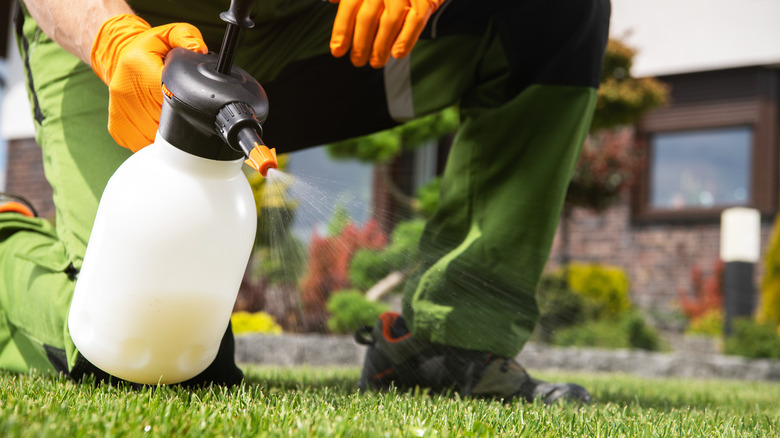Crabgrass Taking Over Your Yard? There's An Easy Solution (But You Might Not Love It)
Though crabgrass is native to Eurasia, it has a long history of popping up in lawns all over the world and if you have this annual weed in your yard, you may have trouble eliminating it. Many gardeners and homeowners seek out ways to kill crabgrass naturally, but it turns out that an herbicide could actually be your best bet for getting rid of this annoying weed. If you didn't do anything to prevent the crabgrass at the end of winter, like applying a pre-emergent, using quinclorac could help kill these weeds, as well as other broadleaf leaves, such as dandelions and white clover.
When there are just a few crabgrass plants in your yard, you may not think it's a big deal. However, one crabgrass plant can produce about 150,000 seeds. This allows the weeds to spread quickly and ferociously. Though you might not love the idea of using an herbicide instead of a natural remedy, it's an easy solution for keeping weeds out of your lawn this spring.
Use quinclorac to control the crabgrass taking over your yard
While post-emergent herbicides like quinclorac can be more effective if you've already applied a pre-emergent, it will still be helpful on its own. This herbicide is safe for cool-season turf grasses that have just been seeded and is most effective when the crabgrass is smaller and still in its first tiller stage. Adding methylated seed oil to your quinclorac can also help to make it more efficient at killing the unsightly crabgrass in your lawn. While this post-emergent is safe for some grasses, it will damage St. Augustinegrass and fine fescue grasses, unless they are in a mix of grass types.
Once the crabgrass begins to grow more and enter the second, third, and fourth tiller stages throughout summer, quinclorac may become less effective; however, it will work great again near the end of August when the temperatures lower. You will need to use higher concentrations of the herbicide to treat crabgrass compared to broadleaf weeds, and total control may require a few applications.
Use pre-emergents as an easy solution for crabgrass
The best time to start treating for crabgrass is before it begins appearing in your yard. Though it might be too late this year, applying a pre-emergent herbicide within the first two weeks of April, or before the weather starts to warm up for spring, will prevent crabgrass seeds from sprouting and take care of most of the problem before it starts. You can apply a pre-emergent as early as February if necessary. The timing of this is important, as crabgrass will begin to germinate and appear once the surface of the soil has been 55 degrees Fahrenheit for a few days in a row. After the grass has begun to grow, pre-emergents will no longer be helpful.
If you decide to use pre-emergents, it's important to wait until later in the season to put out any grass seeds, as these herbicides could kill new grass as well. Most crabgrass pre-emergent herbicides are made with prodiamine, pendimethalin, oxadiazon, dithiopyr, or benefin. Pre-emergents will likely take care of most of the annoying crabgrass, but if any starts to pop up you can treat with quinclorac and methylated seed oils to get rid of these weeds.

